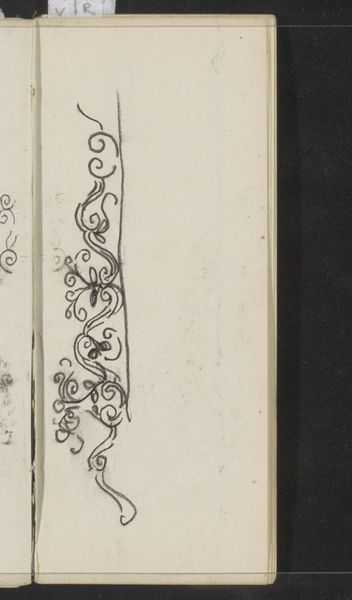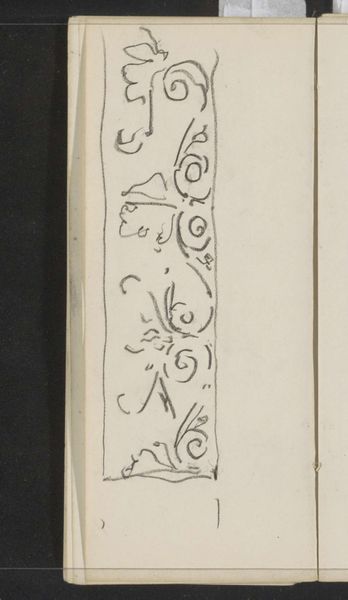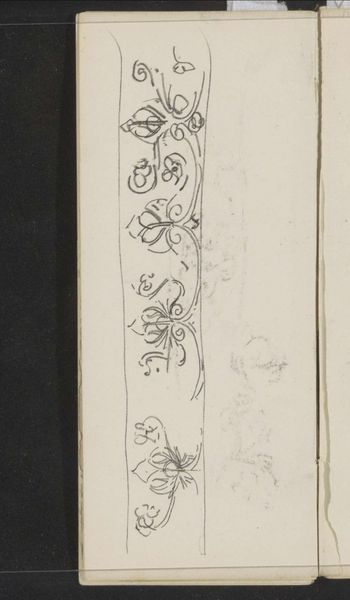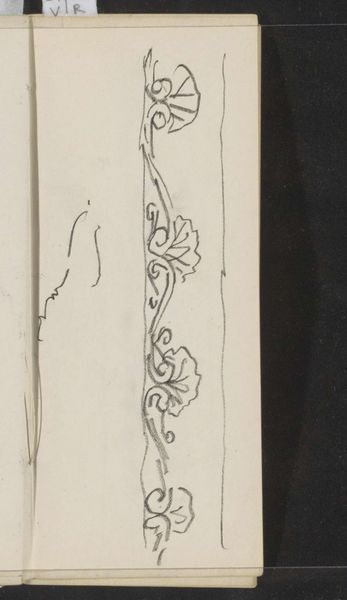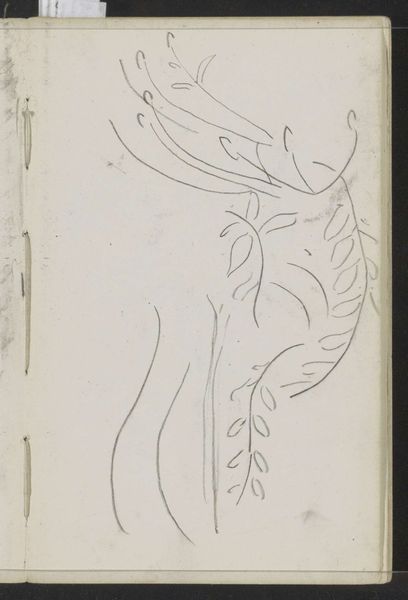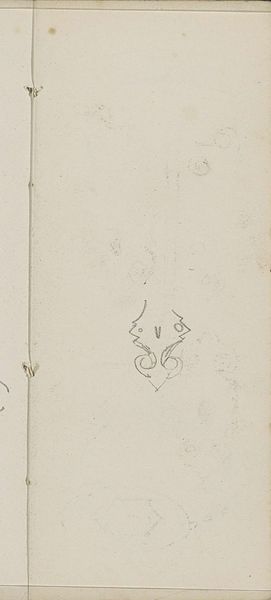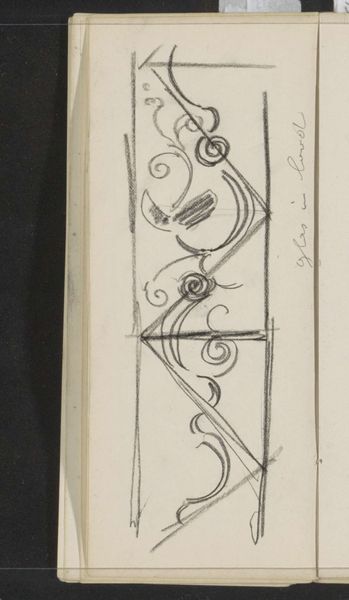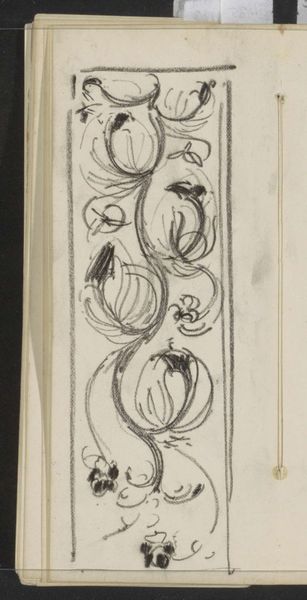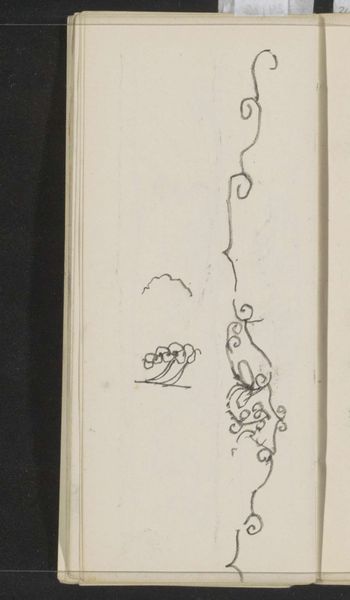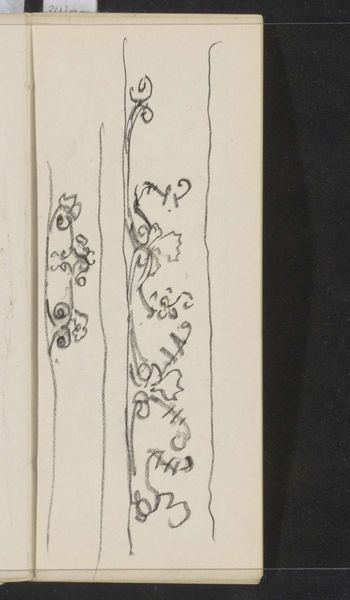
drawing, pencil
#
drawing
#
art-nouveau
#
hand-lettering
#
hand drawn type
#
hand lettering
#
form
#
personal sketchbook
#
idea generation sketch
#
hand-drawn typeface
#
geometric
#
pencil
#
ink colored
#
line
#
sketchbook drawing
#
sketchbook art
#
small lettering
Copyright: Rijks Museum: Open Domain
Curator: This delicate drawing is titled "Band met een floraal motief," or "Band with a Floral Motif," by Gerrit Willem Dijsselhof, dating from around 1901. It’s currently housed here at the Rijksmuseum. Editor: It strikes me as both elegant and somewhat hesitant. There's a delicacy in the line work, yet the composition feels unfinished, almost like a fleeting thought captured on paper. Curator: Exactly. Dijsselhof was deeply involved in the Art Nouveau movement, and this sketch embodies the period's fascination with natural forms adapted into stylized designs. These motifs were often deployed across multiple mediums, including textiles and graphic arts. How does the symbolism resonate with you? Editor: Well, the stylized flora suggests a broader conversation about growth and transformation. The repeated forms create a rhythm, almost like a visual mantra. Are those abstract interpretations of vines or perhaps idealized, deconstructed lotus flowers? There’s an undeniable visual connection to ornamentation from other eras, a continuous thread. Curator: That's astute. You see the cultural echo. It's vital to recognize that Art Nouveau emerged during a period of intense industrialization and social upheaval. The return to organic motifs can be interpreted as a form of resistance against the mechanization of life, and sometimes as a rejection of certain aesthetic conventions deeply rooted in academic structures. Editor: So, in that context, the drawing acts almost as a yearning for a less-rigid societal order. Curator: Precisely. Dijsselhof uses what at first appears like decorative elements to construct a kind of counter-narrative against rigid hierarchies. These images of intertwined leaves carry layers of symbolism. Editor: It also draws our attention to a constant element throughout human creative history. Even today artists draw inspiration from art created centuries ago. It’s almost as if symbols communicate through the ages. Curator: In a sense they do, yes. Editor: Thank you for opening up such insights. I see this now as more than a sketch; it's a complex social response encoded in flowing lines and botanical allusions. Curator: My pleasure. Hopefully, it prompts further conversations on the intertwined nature of art, resistance, and cultural memory.
Comments
No comments
Be the first to comment and join the conversation on the ultimate creative platform.
